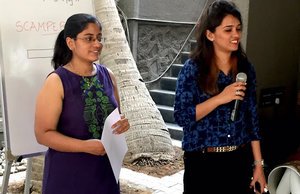Anthropometry for wearables
Lack of consolidated Indian & Asian anthropometric data for limbs, head and other body parts presents unique challenges. How does a design team get around to tackle such a challenge?
By ANAND PALSODKAR
Understanding of human anthropometry is a crucial part of a design process. This is especially true with products like watches, helmets and new age wearable gadgets. These products behave as an extension to a human body and any use of these products resulting in discomfort would lead to a quick failure of the product itself.
‘’ The products we design are going to be ridden in, sat upon, looked at, talked into, activated, operated, or in some way used by people individually or en masse. If the point of contact between the product and the people becomes a point of friction, then the industrial designer has failed. If, on the other hand, people are made safer, more comfortable, more eager to purchase, more efficient-or just plain happier-the industrial designer has succeeded.’’ – Legendary American Designer, Henry Dreyfuss
Globally, designers & engineers rely on anthropometric data studied and compiled by Henry Dreyfuss Associates2. Dreyfuss’s contribution to the field of human factors is seminal, however data points related to specific ethnicities and for new age applications like wearables3 are not comprehensive & at times non existent. Pioneering anthropometric work by Dr. G G Ray4 & Dr. Deb Kumar Chakravarty5 on Indian population does not cover wearable physiological zones in the published version and that creates a large vacuum when dealing with wearable products. The design team working on one such project at Elephant6, came across this chasm and had to modify its approach during the design phase while working for Singapore based technology firm, SynPhNe7.
Undertaking the challenge
The design team embarked upon developing a system of wearable devices for stroke rehabilitation that included an arm gear and a head gear to record the muscle & brain response. The challenges were multifold, the devices had to be used by people suffering from partial paralysis with one of the sides of their body non-functional. The device had to fit arm and head sizes, shapes of population from Indian subcontinents, south-east Asia & China.
The geometry of Arm and the Head had implications since functioning of the device depended on effective sensor contacts to arm skin and head scalp. Available anthropometric data captures only the dimensions of extremities & body parts, however it was important to study the shapes & specific dimensions of arm and the head to determine the profiles of arm and head gear. Such anthropometric data is not available readily. This momentarily stemmed the development work and subsequently led to carrying out anthropometric study of arm and head of a sample population.
Anthropometric study
In-depth user study revealed certain physical realities about the people who would be using such devices. Women wearing bangles, necklaces and those maintaining plaited hair, tight curly hair and people with baldheads & loose skin, all these added to the complexities. Anthropometric research was planned for a sample population of 50 in India & Singapore each. This sample population included men, women and children above the age of 14.
The study included measurements of arm features, circumference at specific points on arm, thumb & palm measurement. Features like circumference, nasion to inion distance, ear-to-ear distance above head were measured for study of the head anthropometry.
The anthropometry data was classified based on 95th, 50th & 5th percentile male and female. For effective therapy it was imperative to have accurate locations of sensors for both arm & head gear. Sensor point variations were plotted both for arm & the head based on the profiles derived from this study. This helped the team to design the devices with adequate adjustability built in for the sensors that covered a larger part of the population.
Head shape profiles were studied to design the head gear to ensure positive contact of sensors with scalp. Arm gear profiles at elbow, mid and wrist location led to the design of common set of arm straps for 3 sizes of arm gear; small, medium & large.
Pain gain
Lack of data led the development team on an anthropometric hunt. A critical realization was the requirement of wearable data and its access while undertaking such development work. The design team acquired body part profiles & surfaces that helped design contact elements & affordances in the product system. This critical metric research led to numerous insights for innovative development work. After 4 stages of prototype testing, clinical trials of the beta version of this product system is underway in the US, India and Singapore.
Notes:
1. Anthropometry is the scientific study of the measurements and proportions of the human body.
2. Henry Dreyfuss Associates, LLC is one of the oldest & most esteemed industrial design consultancy firms in the United States, known for their work in human Factors and a series of iconic products.
3. Wearables is common reference to wearable technology.
4. Dr. G. G. Ray, Professor, IDC, IIT-Powai, Mumbai & Ramakrishna Bajaj Chair, Honorary Professor, School of Biomedical Engineering, IIT Mumbai.
5. Dr. Deb KumarChakraborty, Professor & Dean, IIT-Guwahati, author of Indian Anthropometric Dimensions For Ergonomic Design Practice.
6. Elephant, is a design consulting practice operating in India & Singapore.
7. SynPhNe, is a technology platform, incubated in Singapore, http://www.synphne.org
ANAND PALSODKAR is a mechanical engineer & post graduate Industrial Designer, Design Director, Product Innovation at Elephant. A post grad alumnus of IIT-Powai, Industrial Design Center, Mumbai, he leads the product development vertical. He has worked on several design programs, notably CEAT Tyres, Nirlep Appliances, Thermax Ltd., Symphony Coolers, Paperboat and works on medical & healthcare devices amongst others.








































